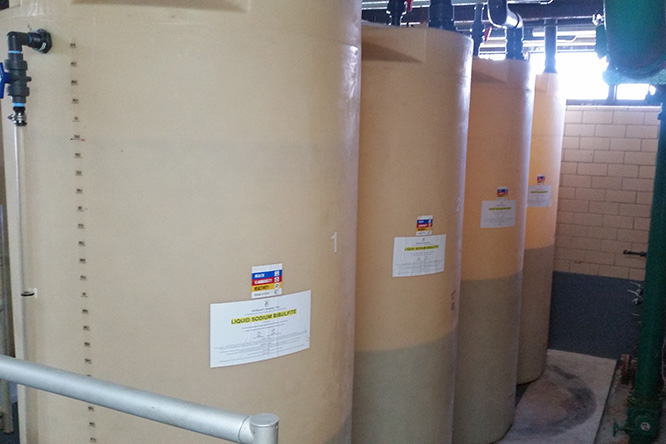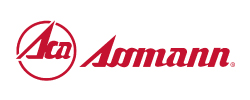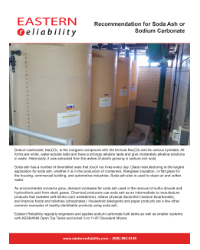Recommendation for Storage of Soda Ash or Sodium Carbonate (Na2CO3)
Sodium carbonate is the inorganic compound with the formula Na2CO3 and its various hydrates. All forms are white, water-soluble salts and have a strongly alkaline taste and give moderately alkaline solutions in water. Historically, it was extracted from the ashes of plants growing in sodium-rich soils.
Soda ash has a number of diversified uses that touch our lives every day. Glass manufacturing is the largest application for soda ash, whether it is in the production of containers, fiberglass insulation, or flat glass for the housing, commercial building, and automotive industries. Soda ash also is used to clean air and soften water.
As environmental concerns grow, demand increases for soda ash used in the removal of sulfur dioxide and hydrochloric acid from stack gases. Chemical producers use soda ash as an intermediate to manufacture products that sweeten soft drinks (corn sweeteners), relieve physical discomfort (sodium bicarbonate), and improve foods and toiletries (phosphates). Household detergents and paper products are a few other common examples of readily identifiable products using soda ash.
Eastern Reliability regularly engineers and applies sodium carbonate bulk tanks as well as smaller systems with ASSMANN Open Top Tanks and small 1/2 to 1 HP Cleveland Mixers.

Technical Specification for Storage of Soda Ash or Sodium Carbonate:
Cross-link or linear polyethylene. Cross-link is preferred for longevity, durability, and safety. Tank must be rated at a minimum of 1.5 or 1.9 specific gravity. Based on a common specific gravity chemical of 1.1 to 1.5 depending on concentration. Stainless steel and fiber reinforced plastic (FRP) are often used for larger vessels.
- Fitting Material:
PVC or polypropylene for nozzles - Gaskets:
EPDM material - Bolting Hardware:
316 stainless steel - Special Considerations:
Proper venting; heat tracing or immersion heaters and insulation for outdoor storage applications
Secondary Containment
All end users should check local regulations to meet secondary containment requirements. Containment must be adequate in capacity and suitable for urea. Double wall type tanks or secondary containment basins should be sized typically to 110% of the primary tank’s capacity.
By accepting the delivery of the tank, the customer accepts full responsibility for providing appropriate and adequate containment for the stored material. Eastern Reliability offers a variety of secondary containment basins.
Connections
Bulkhead style connections can be used on tanks 2,000 gallons and below. For tanks above 2,000 gallons, sidewall connections should be flange type construction. Sidewall connections should be installed a minimum of 7" above the tank floor. Internal siphon drains can be used if required. There are no restrictions on dome fittings. On double wall type tanks 316 stainless steel outlet connections are required.
Sidewall connections should be installed a minimum of 7" above the tank floor. Internal siphon drains can be used if required. Sidewall connections should be kept to a minimum amount and should be placed no closer than 22° apart. Whenever possible, sidewall connections should not be greater than 3". There are no restrictions on dome fittings.
Flexible Hoses or Expansion Joints
Flexible hoses or expansion joints must be used on all lower 1/2 sidewall connections. A lightweight isolation valve is permitted prior to the flexible joint. Nipple and valve weight must not exceed 8 pounds. All piping must be supported independent of the tank. Pipe supports must be installed after the flexible joint to allow the tank to expand and contract under normal service conditions. Polyethylene tanks expand and contract both laterally and vertically; the expansion hose or joint must accommodate for this expansion.
Tank must maintain atmospheric pressure. Vents must be sized for a minimum of two times the largest inlet or outlet port for pneumatically or pump filled tanks. Adequate venting must always be maintained. Under no circumstances should tank be placed under pressure or vacuum conditions.
Special considerations should be taken during venting and air intake into the tank to prevent dust or debris from entering the tank. A vent breather system like an automotive air filter should be considered. Heat tracing and insulation should be considered on urea application when storage conditions fall below 32°F. Process cooling may be required to lower the temperature of urea above 90°F for process effectiveness and efficient chemical reaction.
Delivery
All deliveries must be regulated. Maximum delivery pressures must not exceed 12 PSI. Under no circumstances should tank be placed under pressure or vacuum conditions.


